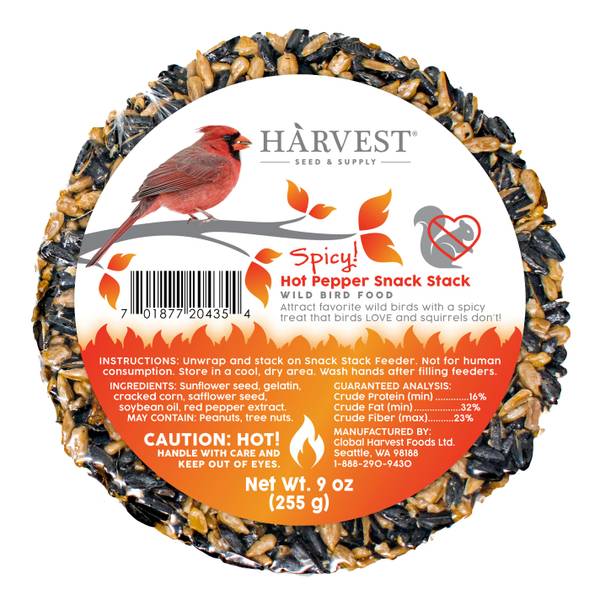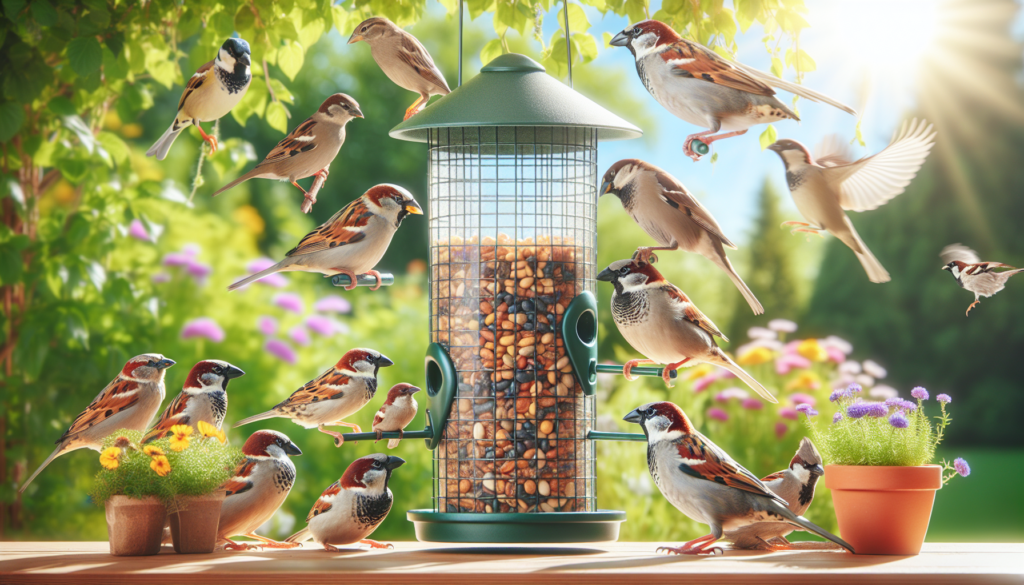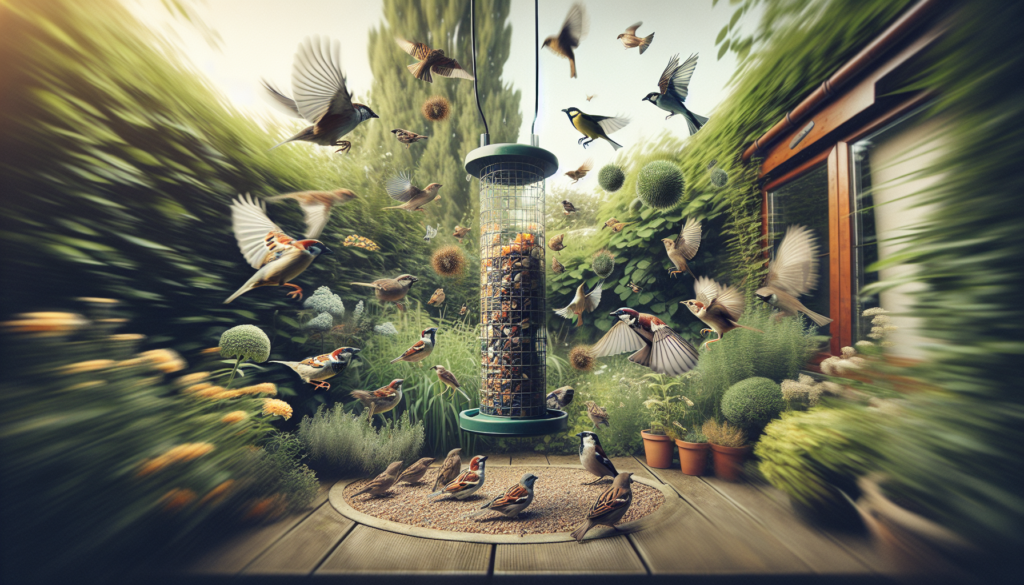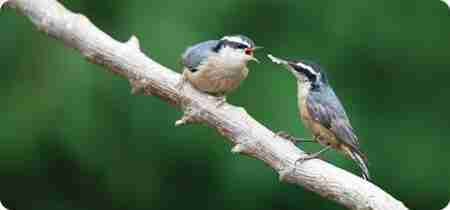Birdwatching can be a delightful pastime for many of us, but sometimes certain birds can become quite a nuisance, specifically sparrows at our bird feeders. These small creatures can devour food meant for other feathered friends, leaving them hungry and dissatisfied. Luckily, we have discovered ten effective methods to keep sparrows away from your bird feeder, ensuring that your avian guests stay well-fed and content. With these tried and tested techniques, you can enjoy the company of a diverse array of beautiful birds while bidding farewell to the unwanted sparrow invasion.

Choosing the Right Bird Feeder
When it comes to choosing the right bird feeder, there are a few factors to consider. The size and design of the feeder are important as they can impact the types of birds that are attracted to it. Larger feeders with multiple perches are ideal for larger birds, while smaller feeders are better suited for smaller birds. Additionally, consider the design of the feeder, ensuring that it is sturdy and made of durable materials.
Type of Feeder
Different types of feeders attract different types of birds. For example, tube feeders are great for attracting smaller birds such as finches and chickadees, while platform feeders are better for larger birds like cardinals and jays. Suet feeders are perfect for attracting woodpeckers and nuthatches. Consider the species of birds you want to attract and choose a feeder that caters to their feeding habits.
Location
The location of your bird feeder is crucial for attracting birds while keeping sparrows at bay. Place your feeder in an open area with good visibility so birds can easily spot it. However, it’s important to keep it away from overhanging branches and structures that sparrows can use as cover. Ideally, position the feeder near trees or shrubs birds can quickly retreat to if they sense danger.
Food Selection
Choosing the right food for your bird feeder is essential in attracting a diverse range of bird species while deterring sparrows. Certain seeds and grains can attract sparrows and other unwanted birds, so it’s important to avoid using them and opt for birdseed mixes that are unappealing to sparrows.
Seeds and Grains to Avoid
Sparrows are attracted to inexpensive seeds and grains like millet and cracked corn. These low-quality ingredients are often found in cheap birdseed mixes and can lead to large numbers of sparrows invading your feeder. To deter sparrows, avoid mixes that contain these ingredients and opt for high-quality seed mixtures specifically formulated to attract a wider variety of birds.
Use of Safflower Seeds
Safflower seeds are an excellent alternative to sunflower seeds for attracting a variety of bird species while deterring sparrows. Sparrows have a strong aversion to safflower seeds, but many other birds, such as cardinals and chickadees, find them quite appealing. By offering safflower seeds in your bird feeder, you can still attract a diverse range of birds without inviting a sparrow invasion.
Hot Pepper Mixes
Hot pepper mixes, also known as “squirrel-proof” blends, can be effective in deterring sparrows from your bird feeder. These blends contain spices like cayenne pepper, which are harmless to birds but repel sparrows due to their strong taste. When sparrows encounter the spicy seeds, they quickly learn to avoid the feeder altogether, allowing other bird species to enjoy the feast.




Creating a Distraction
Creating a distraction for sparrows is an effective way to keep them away from your bird feeder. By providing alternative food sources and planting bird-friendly flowers, you can redirect sparrows’ attention and minimize their impact on your intended bird population.
Planting Bird-Friendly Flowers
Planting a variety of bird-friendly flowers in your garden can provide additional sources of food for birds, which can help distract sparrows from your bird feeder. Flowers such as sunflowers, coneflowers, and zinnias produce seeds that birds find nutritious and tasty. By creating a garden filled with these flowers, you not only add a beautiful touch to your landscape but also provide a natural food source that will keep sparrows occupied.
Installing Bird Baths
Installing bird baths in your yard can also provide an alternative water source for birds, diverting their attention away from your bird feeder. Sparrows, like other birds, require water for drinking and bathing, so having a birdbath nearby can keep them engaged in their own activities and less likely to congregate around the feeder.
Providing Alternative Food Sources
In addition to flowers and water sources, providing alternative food sources throughout your yard can help distract sparrows. Consider placing additional bird feeders filled with different types of birdseed away from your main feeder. This will give sparrows more options and encourage them to explore and feed in other areas of your yard instead of monopolizing your intended bird feeder.
Utilizing Deterrents
Utilizing deterrents is another useful method for keeping sparrows away from your bird feeder. By using visual, auditory, and physical deterrents, you can effectively discourage sparrows from visiting your feeder without causing harm to them or other bird species.
Using Visual Deterrents
Visual deterrents are designed to startle and frighten sparrows, making them feel unsafe and uncomfortable near your bird feeder. One popular visual deterrent is the use of shiny reflective objects like CDs or aluminum foil strips. Hang these objects near your feeder, and as they catch the light and move in the wind, they create an illusion of danger, deterring sparrows from approaching.
Using Auditory Deterrents
Auditory deterrents use sound to repel sparrows. These can include wind chimes, bells, or even a simple radio set to a talk station. By creating unfamiliar and unpredictable noises, you can make sparrows feel threatened and uncomfortable, encouraging them to stay away from your bird feeder.
Using Physical Deterrents
Physical deterrents are barriers or obstacles that prevent sparrows from accessing your bird feeder. Installing a cage or screen around your feeder with openings small enough to exclude sparrows but allow smaller birds to enter can be an effective method. These physical barriers ensure that only specific bird species can access the birdseed, safeguarding it from sparrow invasions.




Implementing Cleaning and Maintenance Practices
Maintaining a clean and tidy feeding area is essential for attracting desirable bird species and deterring sparrows. By following proper cleaning and maintenance practices, you not only provide a healthier environment for the birds but also reduce the likelihood of sparrows becoming attracted to your feeder.
Regular Cleaning Schedule
Establishing a regular cleaning schedule for your bird feeder is crucial. Remove any leftover food, empty and clean the feeder, and sanitize it to prevent the spread of diseases. Regular cleaning removes any potential attractants for sparrows and maintains the overall cleanliness of the feeding area.
Proper Storage of Bird Seeds
Properly storing your bird seeds is equally important in deterring sparrows. Store the seeds in airtight containers or bins to prevent them from getting contaminated or exposed to moisture. Avoid storing them near your feeder, as the sight and smell of open seeds can attract sparrows and other unwanted guests.
Secure Feeding Area
To minimize the attraction of sparrows to your feeder, ensure the feeding area is secure and free from debris. Regularly clean the ground beneath the feeder, removing any spilled seeds or discarded food. Sparrows are opportunistic feeders and will happily scavenge for food on the ground if available. By keeping the feeding area clean, you reduce the likelihood of sparrows being drawn to your feeder.
Attracting Sparrow Predators
Welcoming sparrows’ natural predators to your yard is an effective method for managing their population and deterring them from your bird feeder. By creating an environment that is attractive to birds of prey and installing predator decoys, you can encourage sparrow predators to frequent your yard.
Welcome Birds of Prey
Certain bird species, such as hawks and owls, are natural predators of sparrows. Creating an inviting environment for these birds of prey can help keep sparrow numbers in check. Planting tall trees, providing perching spots, and offering nesting boxes can attract these predatory birds, creating a natural balance in your yard’s ecosystem.
Install Predator Decoys
To further discourage sparrows, consider installing predator decoys such as owl or hawk statues near your bird feeder. The presence of these decoys can trick sparrows into believing they are in danger, deterring them from approaching your feeder and encouraging them to seek safer feeding grounds.

Utilize Nature’s Predators
Nature has its own way of managing bird populations, and by maintaining a harmonious ecosystem, you can utilize nature’s predators to control sparrow numbers. Encouraging the presence of snakes, larger carnivorous birds, or even domestic pets like cats can help deter sparrows from your yard. However, it’s important to ensure the safety and well-being of all animals involved.
Adjusting Feeding Times
Adjusting the feeding times of your bird feeder can help minimize sparrow activity and encourage a more diverse range of bird species during feeding sessions. By avoiding dawn and dusk feeding and opting for midday feedings, you can deter sparrows while still attracting other desirable birds.
Avoid Dawn and Dusk Feeding
Dawn and dusk are peak feeding times for many bird species, including sparrows. By refraining from filling your feeder during these times, you minimize the chances of sparrows being drawn to your feeder and becoming dominant. Instead, focus on filling your feeder during midday when sparrows are less active.
Feed at Midday
Feeding birds at midday is an effective way to attract a variety of bird species while reducing sparrow dominance. Many sparrows are less active during midday, and other bird species that are more active at this time, such as finches or woodpeckers, can enjoy the birdseed without competition from sparrows.
Trial and Error
Finding the right feeding times for your bird feeder may require some trial and error. Observing bird behavior and noting the times when sparrows are most active can help you determine the optimal feeding schedule. Don’t be discouraged if it takes a few adjustments to find the best feeding times that work for both you and the other bird species you want to attract.
Understanding Sparrow Behavior
Understanding sparrow behavior is crucial when it comes to effectively managing their population around your bird feeder. By identifying their habits and patterns, learning about their migration patterns, and understanding their roosting behaviors, you can develop strategies to deter sparrows and prevent them from dominating your feeder.
Identifying Habits and Patterns
Sparrows are known to be opportunistic feeders, flocking together in large numbers and dominating bird feeders. Observing their habits and patterns can help you develop strategies to deter them. For example, if you notice sparrows are most active in the morning, you can adjust your feeding schedule accordingly to minimize their presence.
Learning Migration Patterns
Understanding sparrow migration patterns can help you predict when a larger influx of sparrows might occur in your area. By doing research or consulting local birding experts, you can gain valuable insights into when sparrows are more likely to be passing through or nesting in your vicinity. This knowledge allows you to take proactive measures to deter them during these times.
Understanding Roosting Behaviors
Sparrows are social birds and prefer to roost in large groups. They commonly roost in dense shrubs, evergreen trees, or even man-made structures like buildings. By understanding their roosting behaviors, you can identify areas in your yard or vicinity where sparrows may frequent and take steps to discourage them from nesting or roosting nearby.
Collaborating with Surrounding Bird Enthusiasts
Collaborating with other bird enthusiasts in your community can be a great way to share knowledge, tips, and strategies for managing sparrow populations around bird feeders. By joining birding communities, sharing experiences, and collaborating on sparrow management, you can create a united front against sparrow invasions.
Join Birding Communities
Joining birding communities, either online or locally, allows you to connect with other bird enthusiasts who may have encountered similar sparrow issues. By engaging in discussions and sharing your experiences, you can learn valuable insights and gain new strategies for effectively managing sparrows and maintaining a diverse bird population.
Share Knowledge and Tips
Sharing your own knowledge and tips with fellow bird enthusiasts can also contribute to the collective effort of deterring sparrows from bird feeders. Whether it’s through online forums, social media groups, or local birding meetups, sharing what has worked for you and learning from others can lead to more effective and innovative sparrow management solutions.
Collaborate on Sparrow Management
Collaborating with others on sparrow management can involve various initiatives like organizing bird feeder cleaning schedules or implementing neighborhood-wide sparrow deterrent strategies. By working together with surrounding bird enthusiasts, you can create a support network that effectively addresses sparrow issues in the community.
Seeking Professional Advice
If the sparrow invasion around your bird feeder becomes unmanageable or persists despite your best efforts, it may be time to seek professional advice. Local birding experts, wildlife organizations, and even pest control services can provide expert guidance and specialized solutions to help you deter sparrows and maintain a harmonious birding environment.
Contacting Local Birding Experts
Local birding experts possess in-depth knowledge about local bird species, their behaviors, and effective sparrow management practices. Reach out to them for advice tailored to your specific region and birding needs. They can provide insights, recommend bird-friendly strategies, and offer guidance on curbing sparrow dominance around your bird feeder.
Consulting Wildlife Organizations
Wildlife organizations dedicated to the conservation and protection of birds can also offer valuable assistance in managing sparrows around your bird feeder. These organizations often have resources, guides, and experts available who can guide you on creating a bird-friendly environment while deterring sparrows effectively.
Hiring Pest Control Services
In extreme cases, where sparrows pose a significant nuisance or threat to desirable bird species, hiring professional pest control services may be necessary. Pest control experts have specialized knowledge and tools to address sparrow issues effectively while minimizing harm to other birds and wildlife. Consult with reputable pest control services in your area for humane and environmentally friendly solutions.
By following these comprehensive guidelines, you can create a bird-friendly environment while successfully deterring sparrows from dominating your bird feeder. Remember, it’s important to maintain a balance that allows for the enjoyment of a variety of bird species while still managing the sparrow population responsibly. With some careful planning, a little trial and error, and the collaboration of fellow bird enthusiasts, you can create a thriving birding environment that serves as a sanctuary for both sparrows and desired bird species.




Pingback: Discover the Fascinating World of Birds and Their Extraordinary Traits